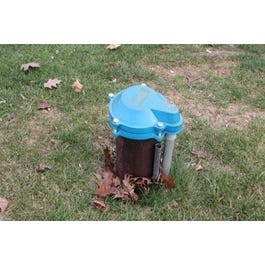
[ad_1]
The “Produce Safety Rule” establishes, for the first time, science-based minimum food safety standards for growing, harvesting, packing, and holding fruits, vegetables, mushrooms, and sprouts intended for human consumption.
Coverage Under the Produce Safety Rule
When we say that a type of produce, a produce-growing activity, or a farm or orchard is “covered” under the regulation, we mean that growers who meet the criteria for coverage will need to comply with the farm food safety standards written in the regulation. Not all produce or growing activities are covered. Retail establishments where produce is sold or served to consumers (e.g., farm stands, farmers markets, grocery stores, and restaurants) are not covered under the regulation, although they may be covered under other state or local regulations. Only commercial produce farms are affected. Home gardens are not regulated.
Determining which farms or types of produce are covered is based on the size of the farm in terms of annual sales and the risk for some commodities to cause illness if they were to become contaminated.
Fruits, vegetables, sprouts, and mushrooms covered under the regulation are:
- Grown on commercial farms with average annual produce sales of at least $25,000 calculated over the previous three years of production. Sales values have been adjusted upward each year to account for inflation. Use FDAs’ calculation tool to find out the latest cut-off value for coverage of the Produce Safety Rule.
- Likely to be eaten raw (e.g., leafy greens, cucumbers, tomatoes, summer squash, and most fruits). Raw produce is considered riskier than cooked fruits and vegetables where any harmful microorganisms are likely to be destroyed.
Put another way, produce not covered under the regulation includes those commodities that are:
- Grown on farms with average annual produce sales less than $25,000 (increased each year to account for inflation).
- Rarely eaten raw (e.g., potatoes, winter squash, pumpkins, and some root crops). FDA has an exhaustive list of produce that is rarely consumed raw, and thus not covered under the regulation.
Keep in mind that even if you think your produce is not covered, you are still required to do all that you can to prevent contamination with harmful microorganisms.
Key Requirements in the Produce Safety Rule
The Produce Safety Rule is divided into key requirements that are intended to prevent contamination of produce during production, harvesting, and after harvesting.
- Worker Health, Hygiene, and Training
- Agricultural Water for Pre- and Postharvest Uses
- Biological Soil Amendments
- Domesticated and Wild Animals
- Equipment, Tools, Buildings, and Sanitation
- Required Records
Worker Health, Hygiene, and Training
FDA requires that all personnel who harvest or handle fresh produce covered under the regulation, and those who supervise them, receive food safety training that is appropriate to their assigned duties. Training must be offered upon hiring and periodically after that, and it must be presented in a language that all workers can understand.
Specific training outcomes required for harvesters and handlers include:
- Recognizing the importance of health and personal hygiene for all personnel and visitors, including knowing symptoms of a health condition that is reasonably likely to result in contamination of produce or food-contact surfaces with harmful microorganisms.
- Knowledge of appropriate hygienic practices when handling produce or food-contact surfaces. This includes washing and drying hands when necessary, especially after using the toilet, and removing or covering jewelry that could fall into the product.
- The ability to recognize produce that should not be harvested because it is likely to be contaminated with harmful microorganisms.
- Understanding the importance of inspecting harvest containers and equipment before harvest so that they are functioning properly, clean, and maintained.
In addition to these requirements, at least one supervisor or responsible person on a covered farm must have completed food safety training at least equivalent to that received under a standardized curriculum recognized by FDA. The Produce Safety Alliance (PSA), in association with FDA, has created a seven-hour training curriculum. Grower training courses are offered throughout the country and can be found on the Produce Safety Alliance website. In Pennsylvania, Penn State Extension offers regular produce safety certification courses. Visit the Penn State Extension FSMA website for a list of upcoming produce grower courses in Pennsylvania.
Agricultural Water for Pre- and Postharvest Uses
Water is used extensively in farming operations. Preharvest uses include irrigation, chemical crop sprays, cooling, and frost control. Postharvest uses include washing or cooling harvested produce or cleaning food-contact surfaces. Handwashing and drinking water are also important uses of water on the farm. In the Produce Safety Rule, FDA only regulates the safety of pre- and postharvest “agricultural water,” a term FDA has defined as water that is intended to, or likely to, contact the harvestable part of the growing crop, the harvested produce, or surfaces that can come into contact with the product.
The source from which agricultural water is obtained is strongly associated with its potential to become contaminated. Surface water has the highest level of risk because it is a shared resource that may be subject to sudden and unexpected contamination from animal intrusion, manure runoff from neighboring livestock operations, or wastewater septic tank discharge. Groundwater is considered safer, although shallow, improperly constructed or located wells may be subject to surface water contamination from runoff or during flooding events. Municipal water is the safest because it is regularly monitored and usually treated to eliminate harmful bacteria. Indirect irrigation methods, such as drip systems, are considered to have the lowest risk for produce contamination because the water is unlikely to contact the harvestable part of the crop. On the other hand, overhead spray systems are at a higher risk because the water will likely contact the harvestable part of the crop.
Microbiological Testing Requirements
The frequency of testing. FDA requires growers to periodically monitor the quality of pre- and postharvest agricultural water through microbiological testing. The frequency of agricultural water testing is based on its source. For surface water, FDA requires farms to do an initial survey using a minimum of 20 samples collected as close as practicable to harvest over the course of two to four years. For untreated groundwater, FDA requires farms to do an initial survey using a minimum of four samples during the growing season or over a period of one year. There is no requirement to test agricultural water that is received from public water systems.
Microbiological criteria for agricultural water. Microbial limits established for agricultural water are based on levels of E. coli bacteria. E. coli is a common inhabitant of the intestinal tract of humans and animals and thus is a widely accepted indicator of fecal contamination and therefore the presence of human pathogens. See the FDA website for a list of several laboratory methods that are approved for this test. Growers are required to make two calculations from the E. coli data obtained during testing: the geometric mean (GM) and the statistical threshold value (STV).
- The GM represents a type of average value for the amount of generic E. coli in a water sample. Multiple E. coli values determined over time are transformed into logarithmic (log) values. Then the average of the log values is determined, and this value is transformed back to the non-log form. It is called a rolling average because once a new test result is obtained, an older one within a defined interval is removed. For surface water, the number of samples in the rolling average is 20. For groundwater, the number of samples is four. The maximum allowable rolling GM value for water that contacts the harvestable part of the crop is 126 cells of E. coli per 100-milliliter sample. FDA recognizes that any E. coli present on the surface of fresh produce will rapidly begin to die immediately after direct water application. Therefore, growers are permitted to adjust their laboratory-obtained values downward by 0.5 log unit (about a two-thirds reduction) for each day between when the water was applied and harvested for a maximum of four days.
- The STV reflects the level of variability in E. coli levels among the samples such as could happen when sporadic rain showers wash waste into rivers and creeks. It can be thought of as the microbial level at which 90 percent of the samples are below the value. The maximum allowable STV for water that contacts the harvestable part of the crop is 410 cells of E. coli per 100-milliliter sample.
If the GM or STV values exceed the limits during the baseline sampling, then the cause of the deviation must be determined and corrective actions taken. A new baseline study as described above must then be conducted. If the results are at or below the GM and STV limits, the number of samples taken each year can be reduced to five or one for surface water or groundwater, respectively.
In addition to testing, you must conduct an annual inspection of your entire water system to determine any conditions that might lead to a contaminated water supply.
FDA allows growers to treat agricultural water with EPA and FDA-approved chemical sanitizers as long as the product is labeled for crop contact and used according to label directions. Other treatments such as ozone or UV irradiation can be used as long as scientific evidence that proves its effectiveness is presented. Microbial testing of treated water is not required, although treatment variables (e.g., concentration, pH, and application method) must be monitored and documented for each use.
Simplify the Requirements for Agricultural Water? The agricultural water standards are among the more controversial sections of the Produce Safety Rule. FDA anticipated that growers would need extra time to learn how to take samples, do the necessary calculations, and take corrective actions if the water supply was found to be non-compliant. FDA, therefore, allowed an additional two years beyond the compliance date for the regulation before water requirements would be enforced.
However, the negative reaction to these standards was more than FDA had expected. Many growers and commodity groups have expressed that the sampling and testing requirements are overly burdensome and the required calculations too complex for most to carry out, document, and interpret. In response, FDA has indicated its intent to simplify the requirements for agricultural water and has also proposed an additional two years beyond the original deadline before compliance will be enforced while they evaluate the practicability and scientific basis for policies and procedures written in the regulation.
In the meantime, growers are advised to continue testing their agricultural water during the growing season to help them understand seasonal trends and potential sources of contamination.
Biological Soil Amendments
Biological soil amendments are materials of animal or plant origin that are intentionally added to the soil to improve its chemical or physical properties (e.g., compost and manure). Animal manures are often added to soil because they are a rich source of nutrients that support plant growth. However, untreated animal manure is a potential food safety hazard if it comes into contact with the harvestable part of the crop. For this reason, the Produce Safety Rule establishes farm food standards for the application of biological soil amendments of animal origin. The regulation forbids the use of human waste except for sewage sludge biosolids that have been treated according to applicable federal or state regulations.
FDA has established standards in the Produce Safety Rule for the use of raw animal manure and compost prepared from raw animal manure as soil supplements.
Raw Manure: FDA states that it is highly likely that raw animal manure contains one or more microbial species that can cause human illness. However, scientific studies have shown that once human pathogens are no longer within the protective environment of the animal colon, they begin to die in response to the destructive effects of sunlight and less favorable temperature and humidity conditions. FDA is currently sponsoring studies to measure the rate at which pathogens die as affected by climatological conditions, application methods, and soil type. Of particular interest is determining the number of days needed between field application and harvest to reduce pathogens to safe levels.
FDA has stated that this will require several years of research under actual farming conditions. Until these studies are complete, FDA does not object to farmers adhering to the raw manure application standards described in the USDA National Organic Program, which call for a 120-day interval between the application of raw manure for crops likely to come in contact with the soil amendment, and 90 days for crops that do not contact the soil. They further state that all untreated biological soil amendments of animal origin, including raw manure, must be applied in a manner that does not contact produce during application, and minimizes the potential for contact with covered produce after application. FDA advises that adherence to these standards is a prudent step toward minimizing the likelihood of contamination while the issue continues to be studied.
Compost Containing Materials of Animal Origin: FDA has established microbial reduction targets for processes used to treat biological soil amendments, including manure. Safe compost must have no detectable levels of Listeria monocytogenes, Salmonella spp., and E. coli O157: H7. Alternatively, if only Salmonella species are tested, they must be absent in a 4-gram dried sample, and fecal coliforms must be fewer than 1,000 colony-forming units per gram (CFU/gm).
The Produce Safety Rule provides two examples of scientifically valid composting methods that will meet these standards:
- Static composting that maintains aerobic (i.e., oxygenated) conditions at a minimum of 131°F (55°C) for three consecutive days and followed by adequate curing
- Turned composting that maintains aerobic conditions at a minimum of 131°F (55°C) for 15 days (which do not have to be consecutive), with a minimum of five turnings followed by adequate curing
There is no restriction on the number of days between application of compost and harvesting for either of these two methods. Any composting method that deviates from these protocols must follow the application intervals for raw manure. In addition to compost preparation requirements, FDA requires that preventive measures be taken to minimize the potential for contact of the compost with produce during and after application. The research will continue to develop and validate alternative composting methods that can meet the microbial reduction standards, and further guidance will become available in the future.
Domesticated and Wild Animals
The Produce Safety Rule addresses concerns about the potential for grazing animals (e.g., livestock and dairy cattle), working animals used in fields for various purposes (e.g., mules or horses), and intrusion by wild animals (e.g., birds, deer, or feral swine) into fields. Growers must take measures to prevent entry of domesticated animals such as cattle, swine, and poultry into fields. Control measures include confining them to designated areas that are not accessible to fields and being aware of potential routes for contamination, such as wind-blown dust or water runoff.
During the growing season, fields must be inspected for evidence of fecal contamination and measures must be taken as necessary to ensure that contamination cannot occur during harvesting. For example, placing brightly colored flags or cones around a contamination site is a recommended way to notify harvesters that they should not harvest produce within the designated perimeter.
FDA recognizes the challenges associated with preventing wildlife intrusion and does not expect growers to completely eliminate this potential hazard, such as by surrounding fields with fences. FDA also acknowledges that unwarranted killing or trapping of animals is not recommended if they threaten protected species. Instead, all reasonable and practical nonlethal methods, such as noise cannons, decoys, or netting, are appropriate.
Equipment, Tools, Buildings, and Sanitation
Sanitation standards for equipment and tools that are likely to contact produce during harvesting and postharvest handling are written into the Produce Safety Rule. Knives, implements, mechanical harvesters, hydro-coolers, grading belts, sizers, and equipment used to store or convey harvested, covered produce (e.g., containers, bins, food-packing material, dump tanks, flumes, and transport vehicles) are examples of equipment with produce-contact surfaces.
Equipment and tools must be designed and constructed so they can be easily cleaned and, when necessary, properly sanitized. They must be stored and maintained to protect produce from becoming contaminated and to prevent them from attracting and harboring pests.
Postharvest packing or storage facilities must be suitable in size, construction, and design to facilitate maintenance and sanitary operations that reduce the potential for produce contamination. Packing buildings must have adequate space for efficient operation, pest intrusion must be monitored and controlled, and overhead drip or condensate minimized. There must be adequate drainage to prevent accumulation of water and waste liquids on the floor. Readily accessible toilet facilities must be provided that are designed, located, equipped, and maintained so they cannot become a source of contamination.
FDA has no objection to packing or sorting activities that are conducted outdoors or in buildings with open walls, as long as measures are taken to prevent pests from becoming established and to trap or otherwise remove them when necessary.
More Information
Learn about upcoming FSMA produce grower trainings from Penn State Extension.
Food Safety Modernization Act – Produce Safety Rule
[ad_2]
Source link






